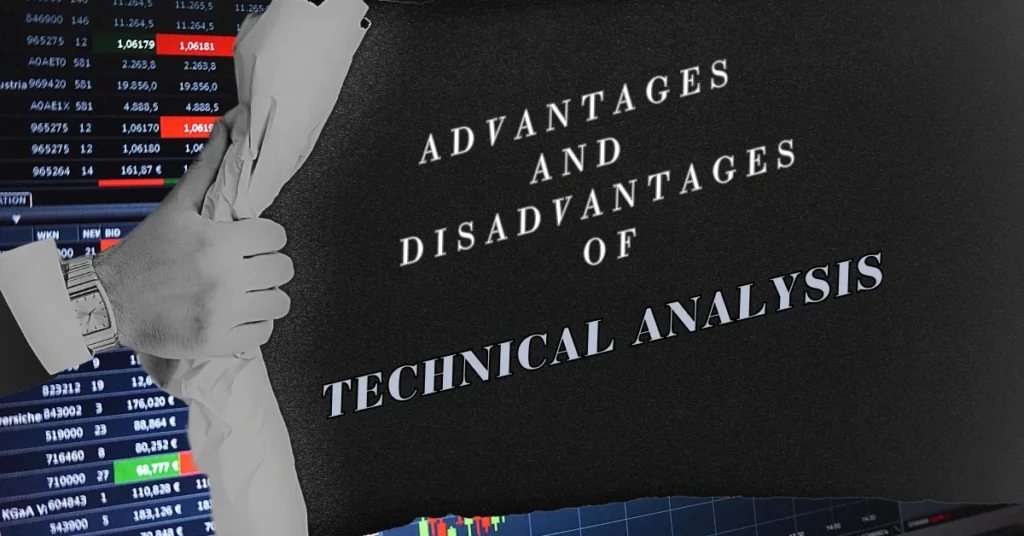What is Technical Analysis?
So, you’re dipping your toes into the world of investing—exciting, right? Whether it’s stocks, forex, or crypto, the first thing most beginners hear about is technical analysis (TA).
But what is it exactly? Simply put, technical analysis is a method used to evaluate and forecast the future price movements of assets based on historical price data, trading volumes, and chart patterns.
Unlike fundamental analysis, which digs into a company’s financial health, technical analysis focuses purely on what’s happening on the price charts.
But, like any tool in investing, TA has its strengths and weaknesses. In this guide, we’ll explore the main advantages and disadvantages of technical analysis for beginners, helping you decide if it’s the right approach for your investing journey.
The Advantages of Technical Analysis
Let’s kick things off with the benefits of using technical analysis. These are the reasons why many traders—especially those just starting—are drawn to this method.
1. Visual Simplicity
- Charts Are Easy to Understand: One of the best things about TA is that it’s visual. Instead of getting bogged down by financial reports and balance sheets, you can look at colorful charts with lines and bars. Have you ever tried reading a company’s quarterly earnings report? It can be overwhelming. But a price chart? It’s like a picture book for traders!
- Pattern Recognition: Beginners often find it easier to recognize visual patterns like “head and shoulders” or “double tops” rather than interpreting economic indicators. These patterns give clues about potential price directions.
2. Short-Term Trading Opportunities
- Perfect for Quick Decisions: Technical analysis is great if you want to make quick, short-term trades. It’s like reading a weather forecast before you leave the house—short, precise, and actionable.
- Spot Trends Early: TA helps identify emerging trends or reversals, enabling you to act swiftly. This can be especially beneficial in fast-paced markets like cryptocurrency, where volatility is the norm.
3. Data-Driven Decisions
- Objective and Quantifiable: Unlike gut-feeling decisions, technical analysis is purely data-driven. Using hard data to guide your trades helps reduce emotional biases. It’s easier to trust a strategy when it’s backed by numbers instead of hunches.
- Backtesting Capabilities: You can test your strategies using historical data. If a strategy worked in the past, there’s a better chance it will work again (though it’s not a guarantee—more on that later).
4. Tools and Indicators Abound
- Wide Range of Indicators: There’s an abundance of tools available, like moving averages, RSI (Relative Strength Index), MACD (Moving Average Convergence Divergence), and Bollinger Bands. These indicators can provide signals on when to buy or sell, making decision-making simpler.
- Free and Accessible: Many platforms offer free charting tools with loads of built-in indicators, making it accessible for beginners who don’t want to spend money initially.
The Disadvantages of Technical Analysis
Technical analysis isn’t all rainbows and profits. Let’s talk about the downsides that every beginner should be aware of.
1. Subjectivity and Interpretation
- Not Always Black and White: One person might see a “bullish flag” on a chart, while another might interpret it as a “head and shoulders.” TA is sometimes subjective, leading to varied interpretations of the same data.
- Confirmation Bias: It’s easy to fall into the trap of seeing what you want to see. If you expect a stock to rise, you might interpret the chart in a way that supports your belief—this is a classic psychological pitfall for many beginners.
2. Short-Term Focus Can Lead to Overtrading
- Constant Monitoring Needed: If you’re using technical analysis, you may find yourself glued to the screen, constantly checking for price movements. This can be mentally exhausting and time-consuming.
- Overtrading Temptation: The urge to trade frequently can lead to overtrading, where fees pile up, and emotional trading takes over. Remember, the more you trade, the higher your transaction costs—a sneaky way to lose money even if your predictions are accurate!
3. Market Manipulation and False Signals
- Prone to Whipsaws: Markets can produce fake signals that lure you into bad trades—this is known as a “whipsaw.” In volatile markets, you can get trapped in false breakouts or misleading trends.
- Algorithmic Trading Impact: Big players use sophisticated algorithms that can manipulate short-term market movements, creating noise that can lead beginners astray.
4. Ignores Fundamentals
- No Insight into Company Value: Technical analysis doesn’t care whether a company is innovative or drowning in debt—it only looks at price. This means you might miss crucial factors that could impact long-term investments.
- Economic and News Events Overlooked: Major economic shifts, political changes, or significant company news aren’t accounted for in charts. Relying solely on technicals can make you blind to bigger, fundamental changes.
Tips for Beginners: How to Use Technical Analysis Wisely
Before wrapping up, here are some practical tips for beginners who want to dive into technical analysis without getting overwhelmed:
- Start with the Basics: Begin by understanding the most common chart patterns and indicators. Don’t rush into advanced techniques until you’re comfortable with the fundamentals.
- Use TA as a Complement: Consider using technical analysis alongside fundamental analysis. While TA is great for timing trades, fundamental analysis can help you pick solid companies with strong potential.
- Keep a Trading Journal: Track your trades, strategies, and outcomes. A journal will help you learn from mistakes and refine your approach.
- Don’t Be Afraid of Mistakes: Everyone makes bad trades, especially at the start. Use them as learning experiences instead of getting discouraged. Remember: losing is part of the learning process.
- Practice with Virtual Accounts: Many platforms offer demo accounts to practice trading with virtual money. It’s a risk-free way to hone your skills before putting real cash on the line.
Conclusion: Is Technical Analysis Right for You?
So, there you have it—the good, the bad, and the ugly of technical analysis for beginners. It’s a powerful tool for those who enjoy data, patterns, and quick decisions, but it’s not a one-size-fits-all solution.
Have you ever wondered if you’re more of a short-term trader or a long-term investor? Your answer might determine whether technical analysis is your new best friend or a fair-weather acquaintance.
Remember, there’s no harm in experimenting, and investing always involves learning. Start slow, learn as you go, and never stop asking questions.
After all, the market is like a giant puzzle—each trade is a piece, and it’s up to you to see the bigger picture.
Also, Read | High-Frequency Trading Explained: A Beginner’s Guide
Also, Read | Stock Buybacks Explained: What Beginner Investors Need to Know



